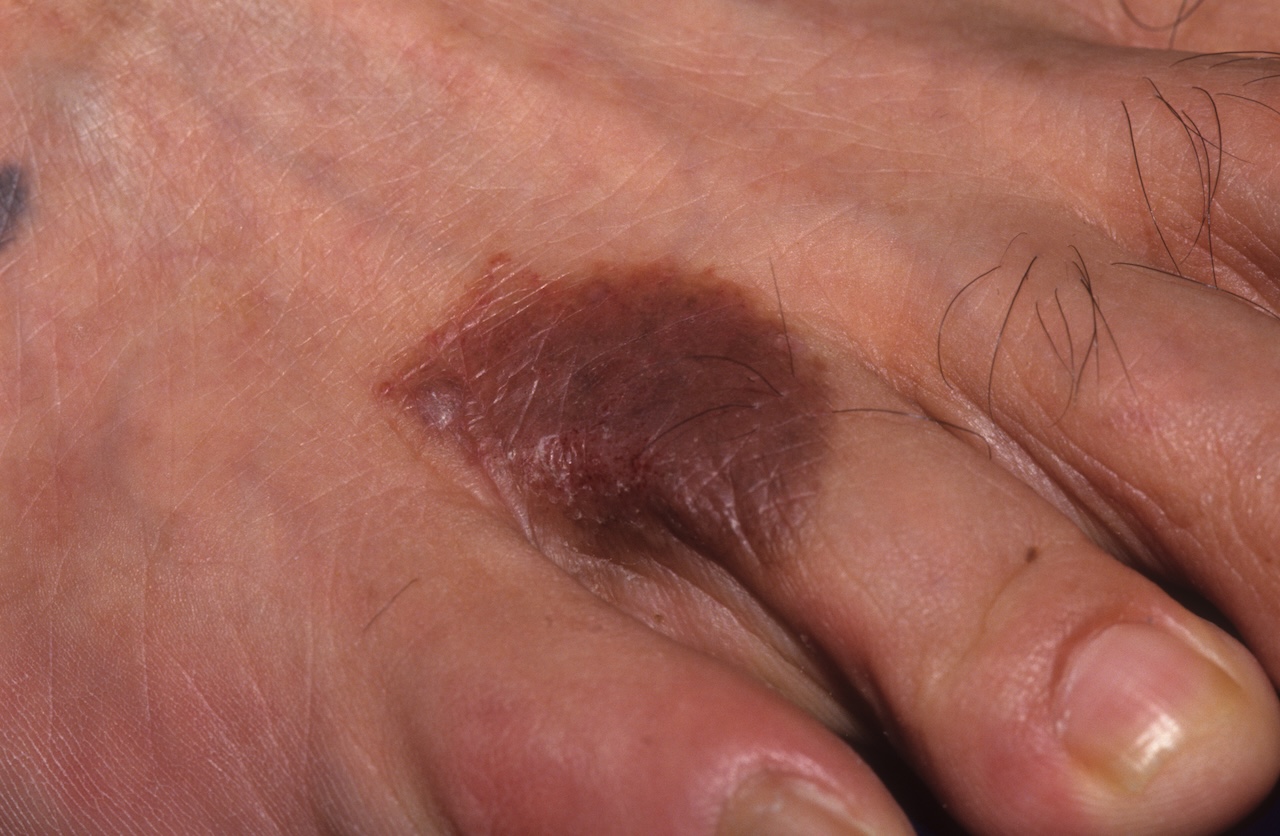
A good example of the reason behind the term "progressive pigmented purpura". This lesion looks "pigmented".
CAPILLARITIS or PROGRESSIVE PIGMENTING PURPURA
The term capillaritis (aka progressive pigmenting purpura (PPP), pigmentary purpuric eruptions, progressive pigmentary dermatosis, progressive pigmenting purpura, purpura pigmentosa chronica) refers to a group of diseases characterized by red, purple or brown color changes in the skin related to leakage of blood out of capillaries.
- Several variant exist including lichen aureus, progressive pigmentary dermatosis of Schamberg, [Purpura Annularis Telangiectodes of Majocchi, Pigmented purpuric lichenoid dermatitis of Gougerot and Blum, and eczematid-like purpura of Doucas and Kapetanakis.
- The overall mean age at diagnosis was 43 years in one study, ranging from 13-74 years.
Reported Triggers of Capillaritis
- New medication, e.g., apremilast, aspirin, interferon alfa and furosemide.
- New vitamin supplement.
- Infection e.g., recent upper respiratory infection or periodontitis.
- Sun exposure. A UVA action spectrum has been documented.
- Eczema.
- Increased Pressure
- Walking for long periods of time.
- Leg swelling.
- One of my patients developed an area of capillarities on the left shin after having less than successful vein surgery. Several varicosities developed in that area as well, suggesting that the surgery increased venous pressure locally, triggering the capillarities.
- Another patient of mine in her 50's developed capillaritis of the both lower legs and low grade pitting edema of the ankles after weight gain and untreated hypertension.
Clinical
Tiny purpuric macules coalescent into plaques is typical. The lower legs are the most common site (in one study 80%). Various forms including annular and pigmented occur.
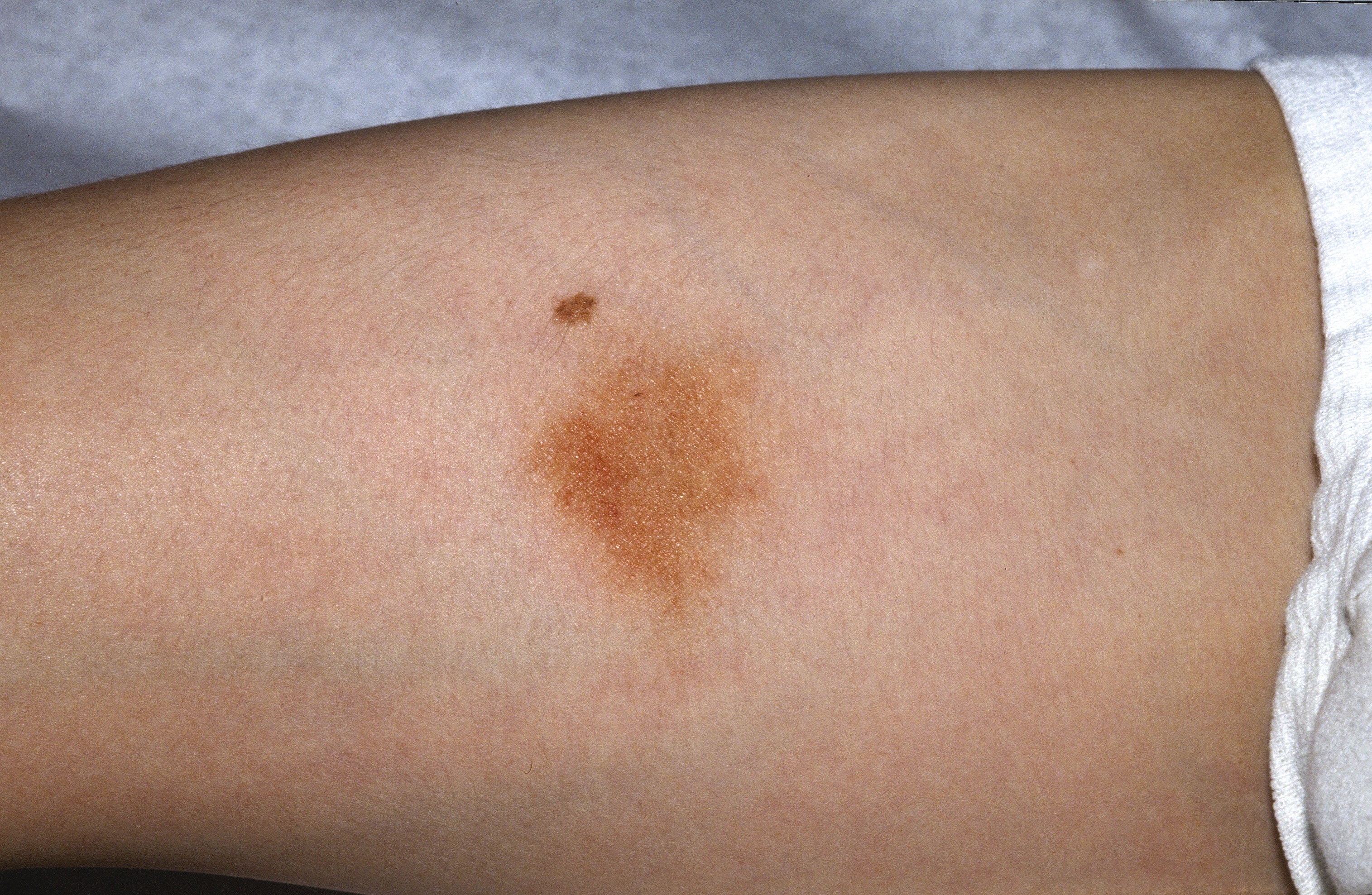
Lichen Aureus, having a golden color.
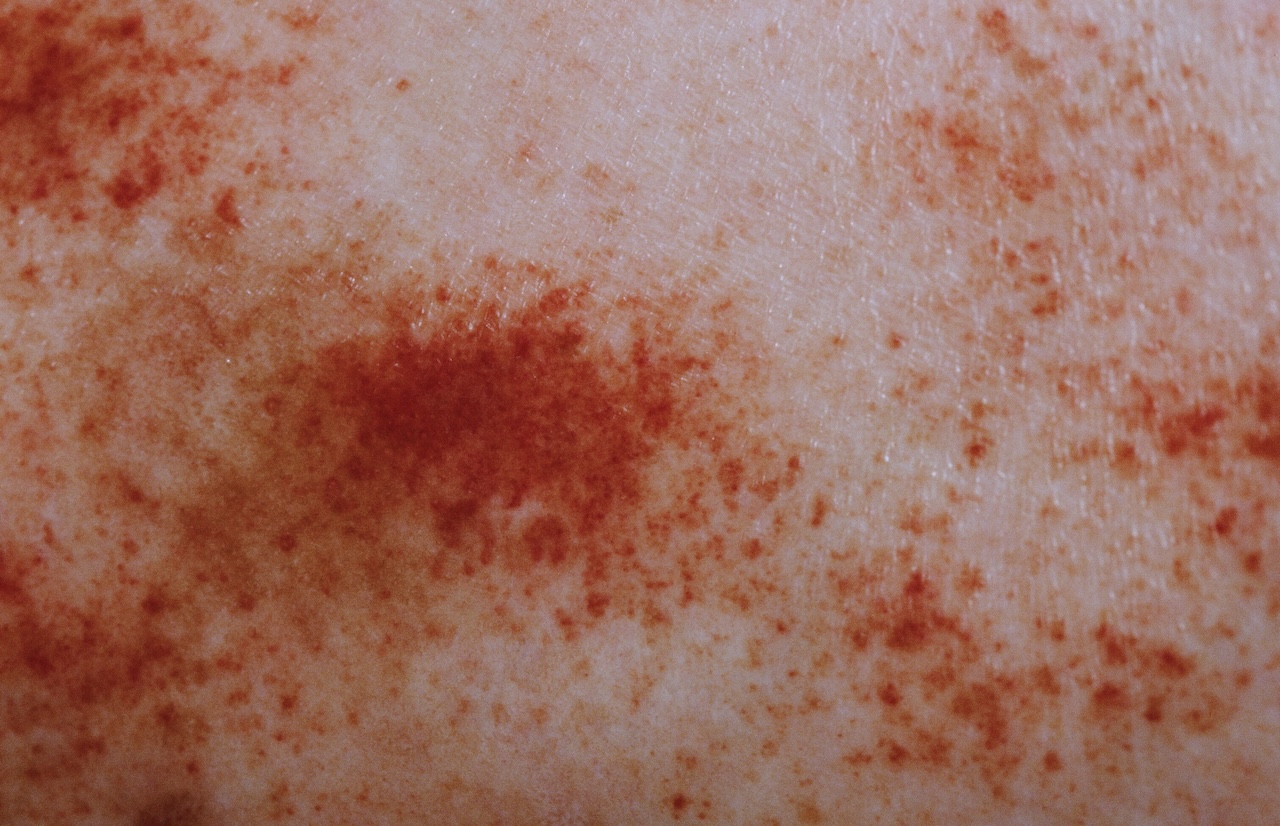
Cayenne pepper red and brown.
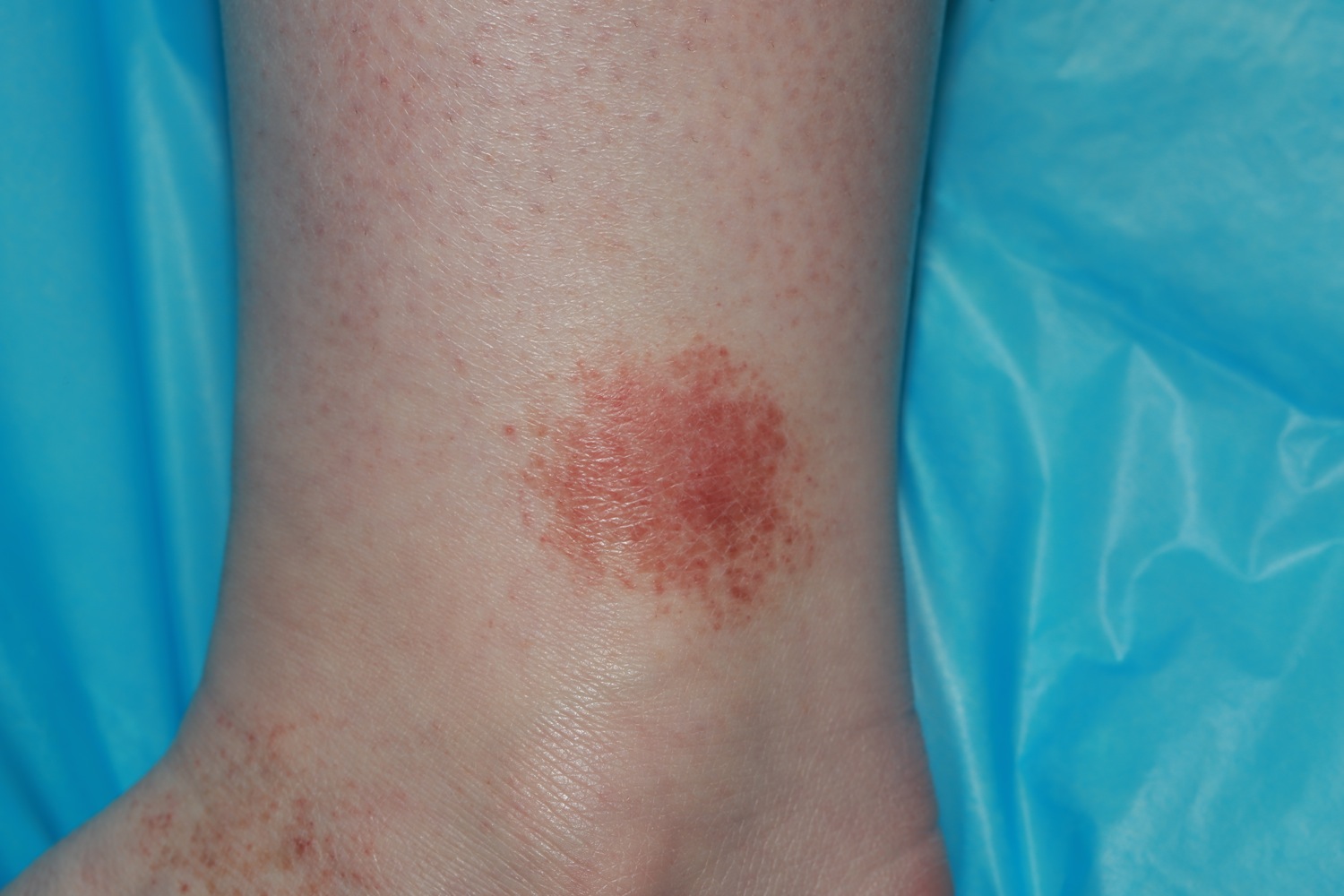
A solitary lesion just above the ankle, a typical location.
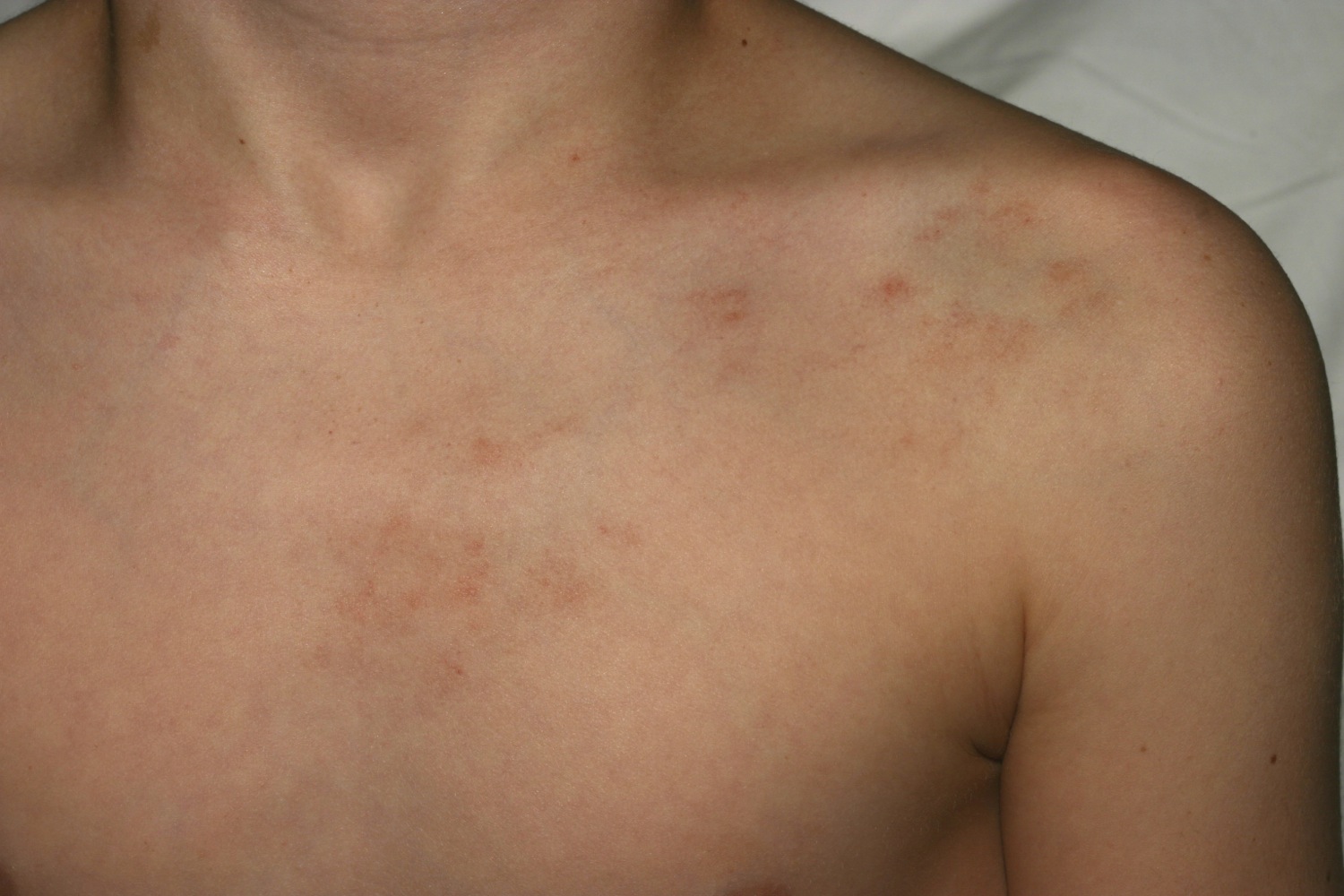
8-year-old with pigmentation in a dermatomal pattern.
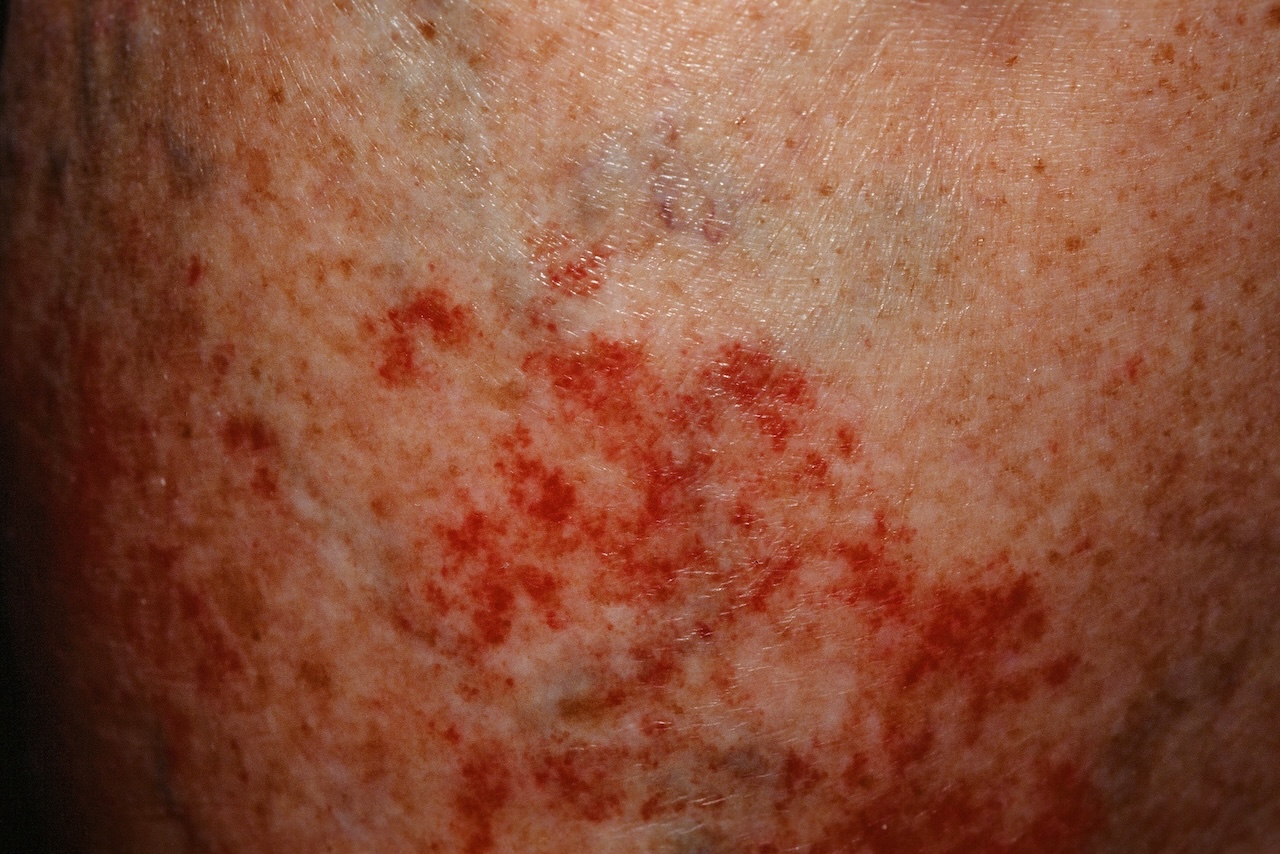
A more inflammatory, acute red color.
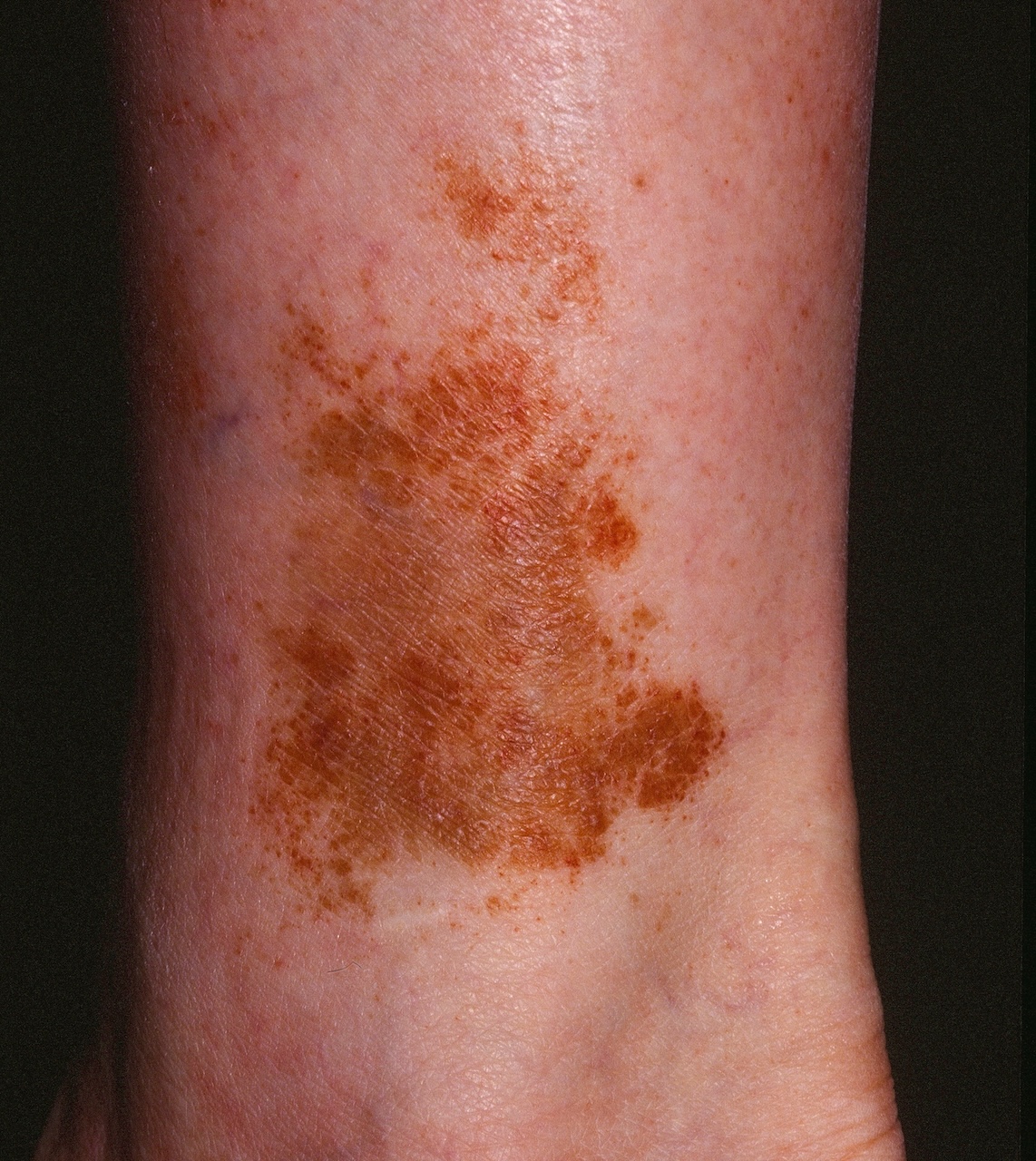
Both red and brown staining of the skin.
RegionalDerm
Homepage | Who is Dr. White? | Privacy Policy | FAQs | Use of Images | Contact Dr. White
It is not the intention of RegionalDerm.com to provide specific medical advice, diagnosis or treatment. RegionalDerm.com only intends to provide users with information regarding various medical conditions for educational purposes and will not provide specific medical advice. Information on RegionalDerm.com is not intended as a substitute for seeking medical treatment and you should always seek the advice of a qualified healthcare provider for diagnosis and for answers to your individual questions. Information contained on RegionalDerm.com should never cause you to disregard professional medical advice or delay seeking treatment. If you live in the United States and believe you are having a medical emergency call 911 immediately.






